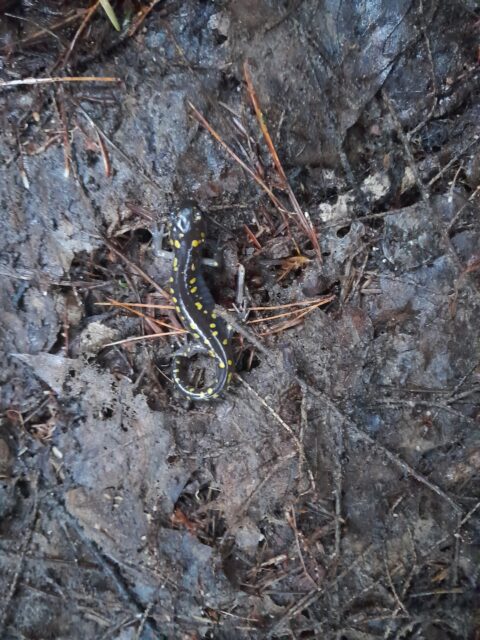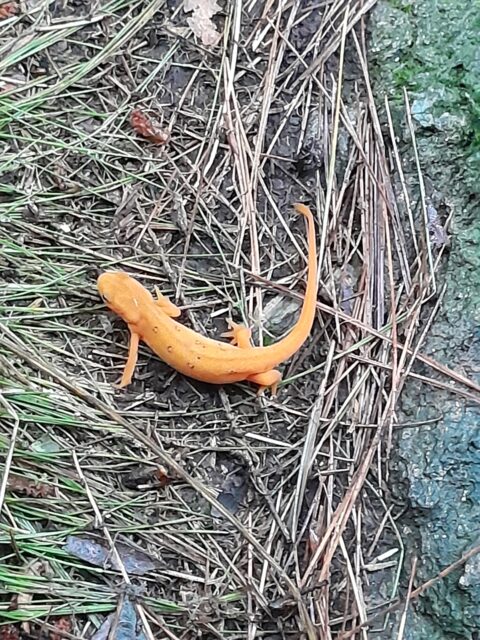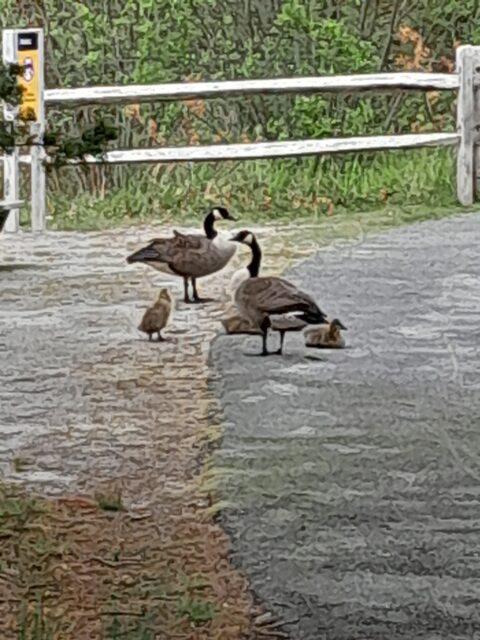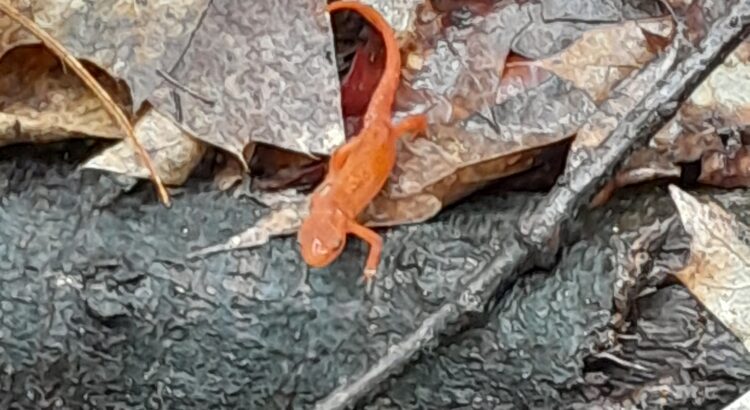SCA Interpretive Ranger Carolyn Sill
Rainy days are a big bummer. How many times have you wanted to drive down to the seacoast, or do some rock climbing, only to hear the ominous roll of thunder, as if the sky is laughing at your plans? Rain forces us to sometimes cancel plans for outdoor fun, forcing us to stay inside instead. Nothing can make a smile turn upside down more than a cumulonimbus cloud.
But what if I told you that there are certain animals out there who love a rainy day? To them, grey skies, deep puddles, and all-day showers add up to a beautiful day. Such foul-weather friends include amphibians, those cool critters who can survive in both water and land. For them, the wet ground is the best of both worlds!
Silly Salamanders

Salamanders look like lizards, but are in fact amphibians due to their dependency on water. (Lizards, which are reptiles, don’t need water as much and can live in deserts.) Rain is necessary even before the salamanders hatch from their eggs. In the spring, rain creates vernal pools, places where salamanders, frogs, and toads lay their eggs. These pools last only for a few weeks, just long enough for amphibians to reach adolescence. I recommend seeking out these fleeting beauties during the springtime-you may find a mass of jelly-like frog eggs, dozens of wiggly tadpoles, and some proud salamander parents underneath the nearby rocks!

If it’s stopped raining, or is raining lightly, it’s fun to go on a salamander safari. As mentioned above, they often hide under rocks. The red eft, however, is not shy at all and likes to come out during the rain. And come out they do; I recall hiking at Pawtuckaway State Park one day, and it was drizzling on and off all day. I tried counting all the efts I saw that day, but lost track around number 40. You may not know it, but these little guys are the same kind of animal as the eastern spotted newt; this is the young adult phase, and they will eventually return to water.
If you do go salamander searching, be very careful to wash your hands before, and keep them wet while looking. The oils in your skin can harm salamanders; they have extremely delicate, porous skin that’s great for absorbing water, but unfortunately also prone to absorbing things that hurt the salamander. It may be best not to touch them at all.
Slugs and Snails and Oily Goose Tails

Two non-amphibian fans of the rain are slugs and snails. These slimy cuties adore wet weather. It’s easier, and more comfortable, for these legless creatures to slither on moist surfaces. Whether on a tree or the pavement, you will surely see a handful of these guys hanging out after a good rain!

Have you ever heard the phrase “water off a duck’s back”? There’s some truth to it. Ducks and geese both have special oil-infused feathers. The oil keeps water from messing up the feathers; if they didn’t have the oil, and got covered in water, the bird would have trouble flying away. It also keeps them warm on chilly rainy days. This is why ducks and geese often seem unbothered by the rain, even when it’s pretty heavy. Foul-weather fowl!
Rain Rules!
While the rain can ruin our plans, it’s not an inherently bad thing. Salamanders, slugs, snails, and waterfowl all love rain, and to be honest, I think I’m with them! Going on a post-rain safari in search of snails or other critters is a fun way to make up for any disappointment the rain may have caused. It’s doubly fun in the spring, when vernal pools have tons of tiny pals in them. And, often after it rains, there are rainbows-another great reason to get back outside once the showers stop. So next time there’s a storm, stay happy-some of our cutest local wildlife are having a happy day, and once things get a little nicer out, you can go join them!

